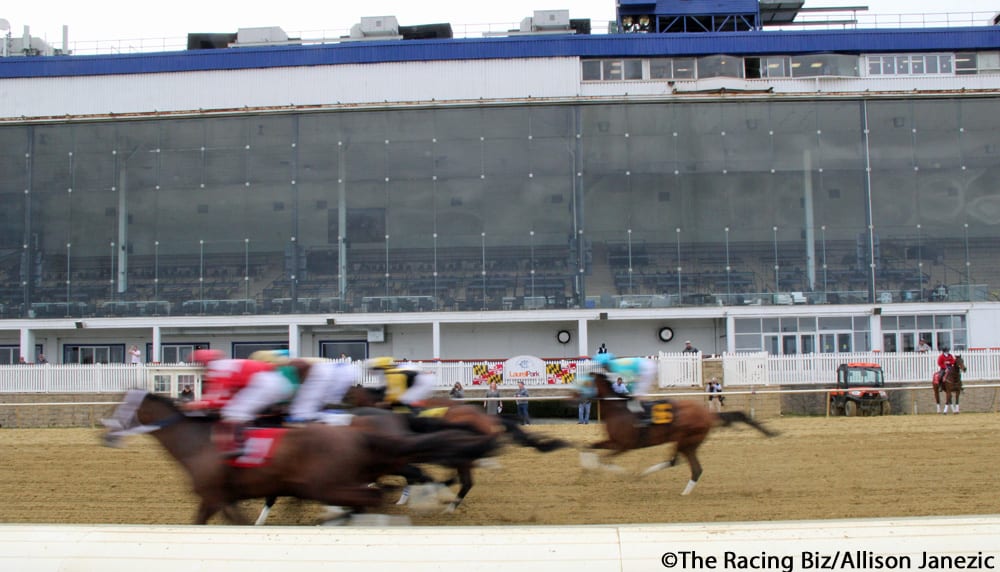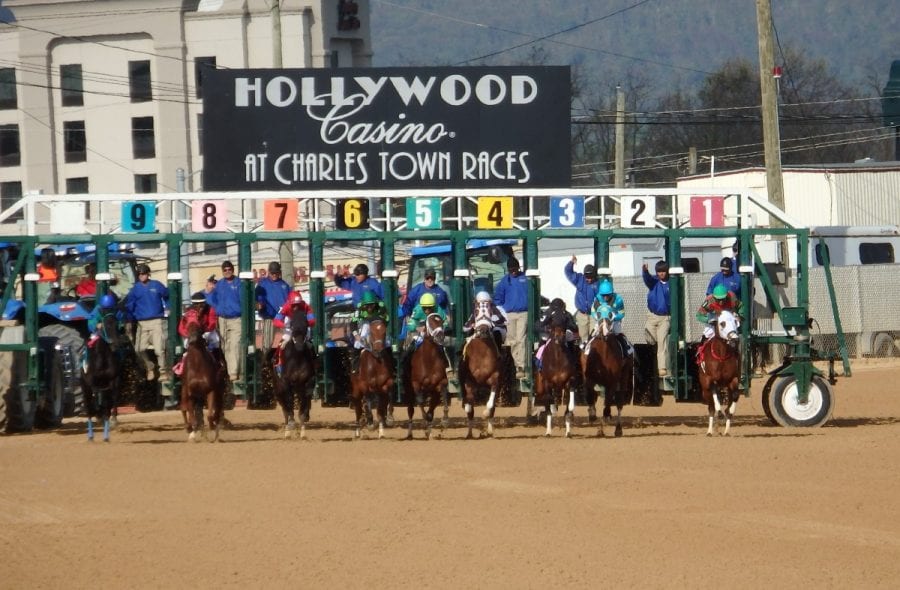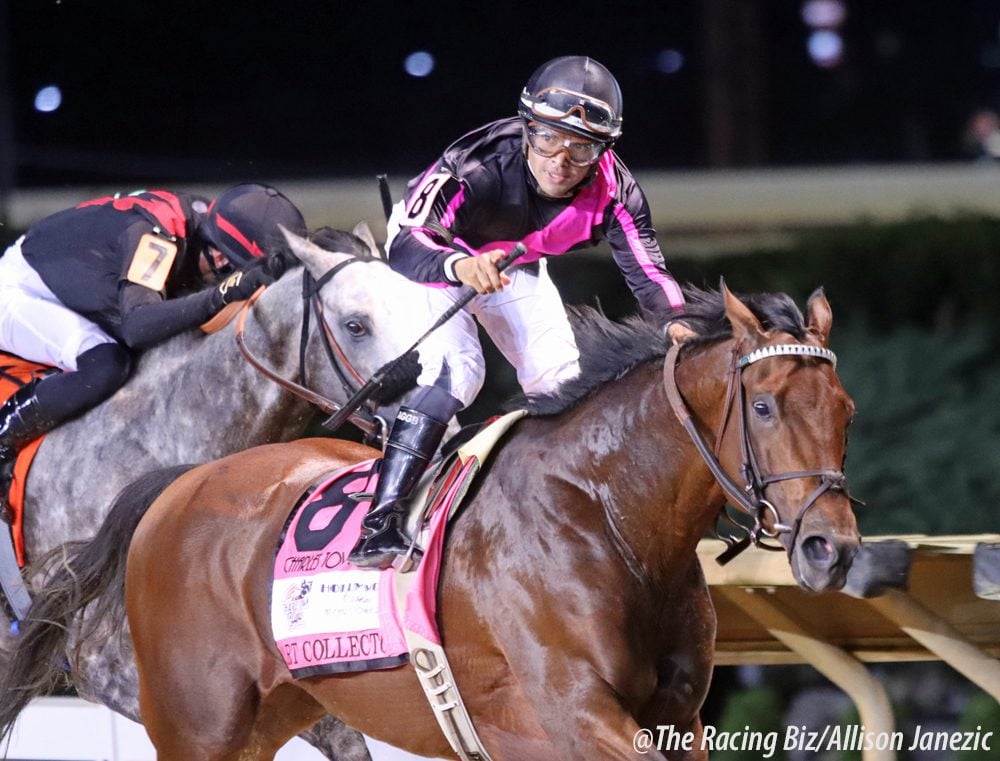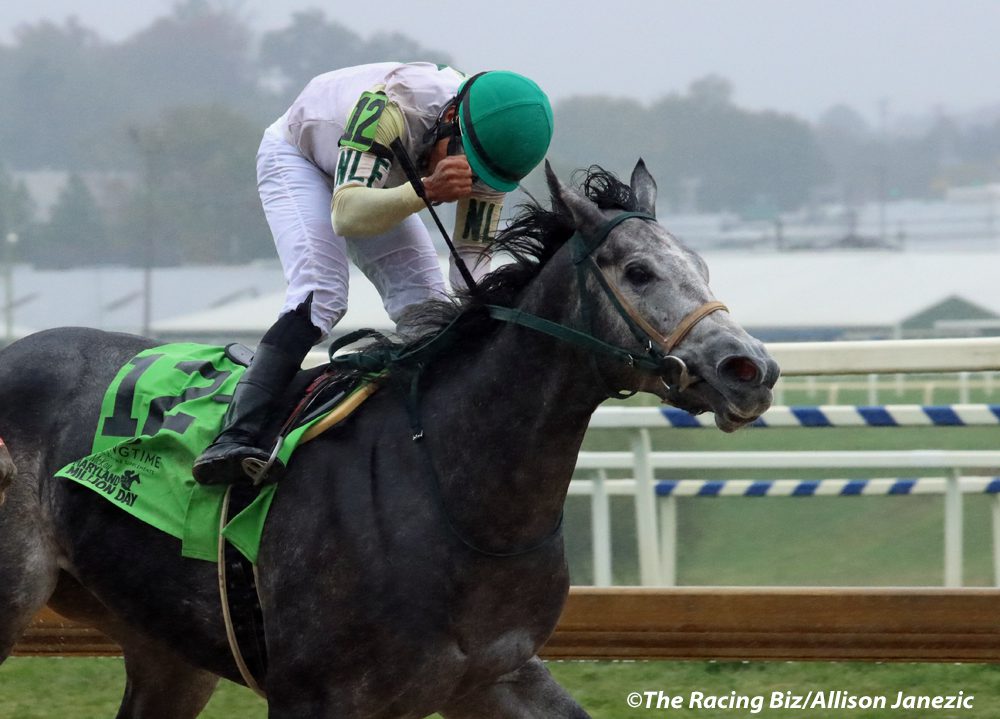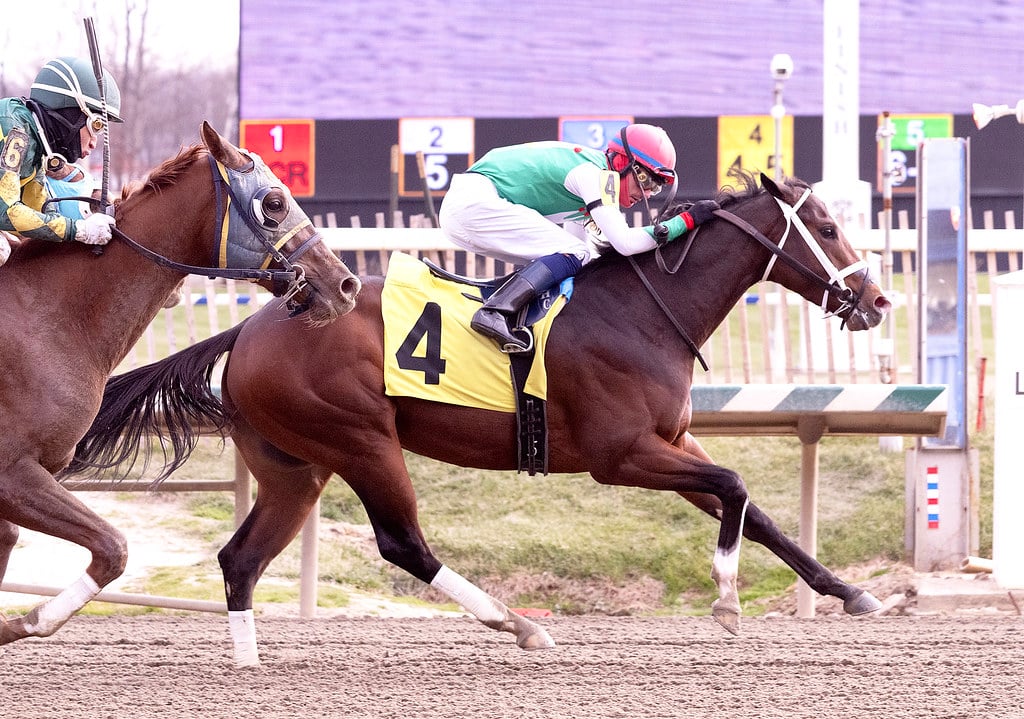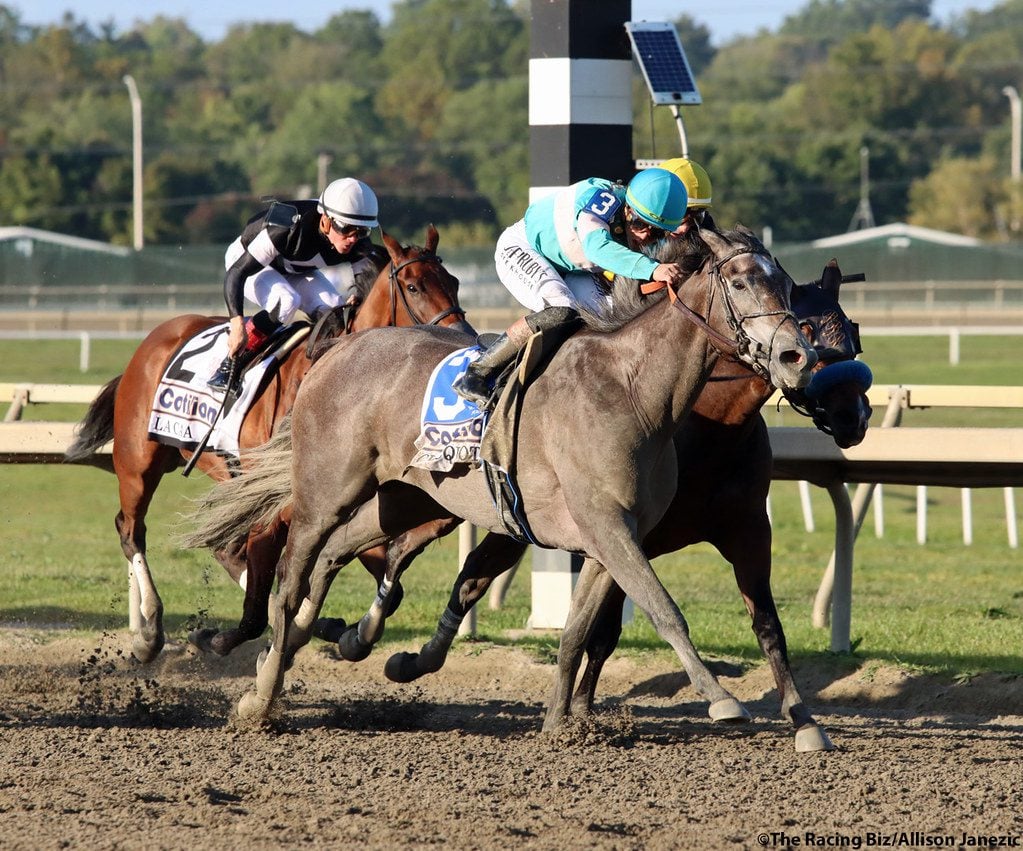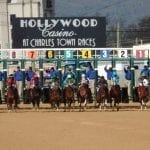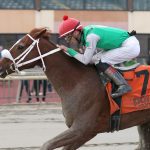Mike Hopkins steps down after 40 years at Md. Racing Commission
While hope springs eternal, optimism is in pretty short supply in many horse racing quarters these days, what with declining handle, plummeting foal crops, and other concerns. But one guy persisting in walking on the sunny side of the street is Mike Hopkins.
“I’m still an optimist,” Hopkins says. “I think there’s a place for horse racing in this state. There certainly is a lot of revenue generated from it. There’s a lot of economic impact from it for the whole horse business.”
And he’s a guy who’s seen a few things. Hopkins, 66, retires Dec. 31 after 41 years at the Maryland Racing Commission, the last 24 as executive director.
Oops. Make it 40 years.
“It was 40 years October 10, 2024,” he notes.
He’s pretty good at dates. For example: when did Bowie close for live racing?
“July 13, 1985 was the last day,” he recalls. “It was on my birthday. So there you go.”
That vignette points to one of the biggest changes Hopkins says he’s seen in the industry over the years: the consolidation of track ownership and, later, race days. Back in the early 1980s, Maryland’s three so-called mile tracks – Laurel Park, Pimlico, and the late, lamented Bowie – all were under separate ownership.
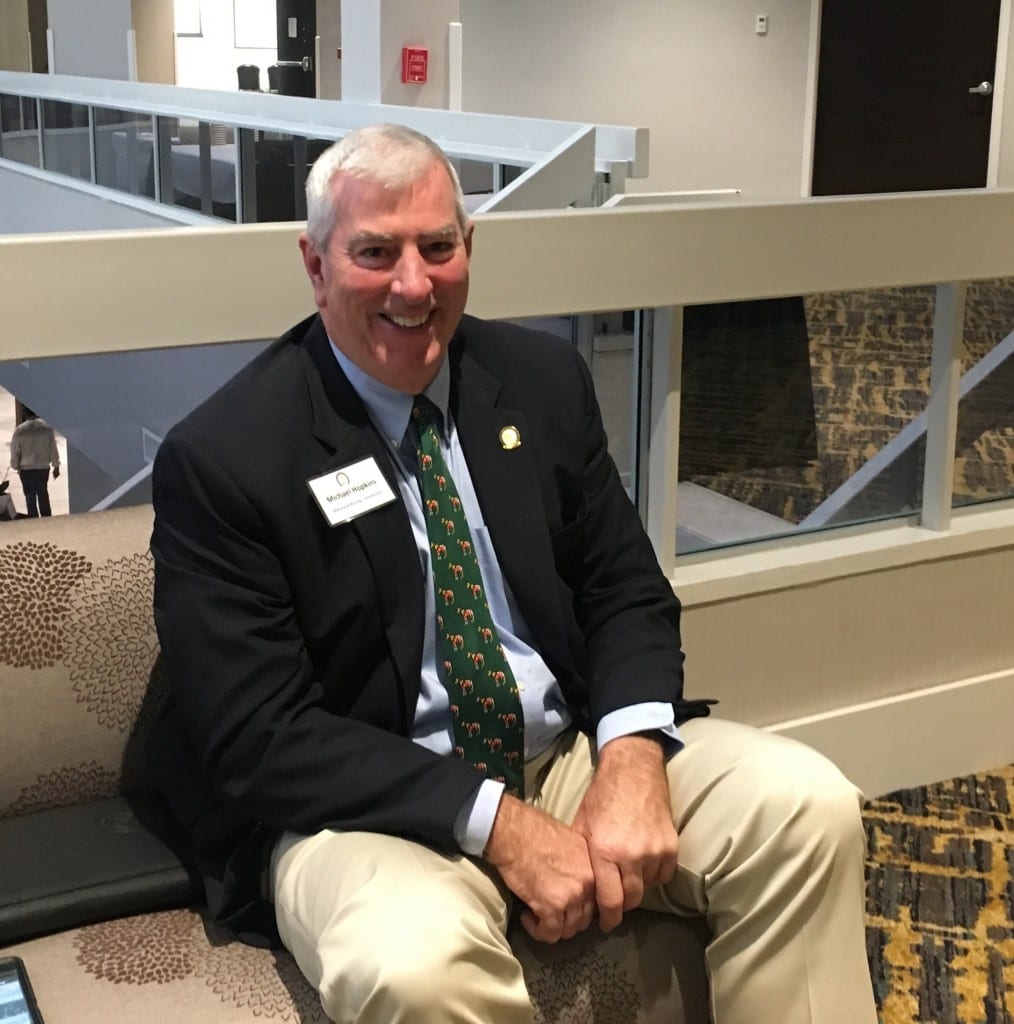
“They used to fight every day,” Hopkins remembers. “The Commission had discretionary days, and the racetracks, because of separate ownership, would work against each other as far as trying to get the better days.”
Back then, though, there were plenty of days to go around.
“When I started, we were running six days a week, 300 days a year,” he says with a laugh. “That was busy.”
In 2025, Maryland’s two major tracks will run 120 days, while Timonium will add in an additional seven, for a total roughly 40% of what it once was.
That’s in part a function of gambling demand, and in part a function of horse population.
“You had three racetracks pretty much full of horses,” Hopkins says. “I think Bowie could hold 1,700 [horses]. I think Laurel, 1,200, and you had some at Pimlico. Instead of having 1,200 horses at your disposal as you do now, you’re at 2,000, 2,500. That’s a big difference.”
Now, of course, the tracks will transfer from private to nonprofit ownership under the auspices of the Maryland Thoroughbred Racetrack Operating Authority.
Another big change, Hopkins notes, came in the form of the Horseracing Integrity and Safety Authority (HISA), in which medication and safety rules were removed from state commissions and given to the federally-created Authority.
Hopkins believes the movement towards HISA was “inevitable” and lauds it for creating “uniformity.”
But he also urges HISA “to look at itself internally and look at ways to become more efficient.”
HISA is collecting tens of millions of dollars annually from horsemen and racetracks, and Hopkins says, “I don’t know how long the industry can sustain those costs.”
The old-time squabbles over days, Hopkins says, occasionally required the Commission to step in to act “as an arbitrator.”
More modern examples of the Commission deploying that sort of soft power include the negotiations that led to the so-called “10-year deal,” which ushered in a decade of relative peace among horsemen and the racetracks; and the standoff that ensued when the Stronach Group sought to prohibit, over horsemen’s protests, the use of the anti-bleeder medication Lasix in two-year-old racing.
That latter, says Michael Algeo, who was Commission chair at the time, “was a huge battle.” In the end, the horsemen, eager to get their juveniles running, agreed to the prohibition while getting some concessions in return.
Of Hopkins’ even-keeled, well-informed approach to those issues, Algeo, a Vietnam veteran, adds, “I want him in my foxhole.”
Current Commission chairman George Mahoney agrees.
“Mike has been respectful,” Mahoney says. “He has been the absolute essence of a gentleman throughout some meetings that we had that maybe were up and down, but Mike never wavered. He never flinched.”
Hopkins grew up in Maryland and around the racing industry. Some early equine acquaintances of his were the great sire Northern Dancer and five-time Horse of the Year Kelso, of whom turf scribe Joe Hirsch wrote, “Once upon a time, there was a horse named Kelso. But only once.”
Encouraged by Chick Lang, he began work at the Commission as deputy executive director, holding that position until 2000, when he landed the top job. One of the commissioners he served under while deputy director was his father, Frank Hopkins.
“That was different,” Hopkins says with a laugh. “We had some very poignant arguments over a few things. We had to agree to disagree on certain things.”
Though Hopkins once wrestled a bear — he hadn’t had anything to drink, he says, and he didn’t win – and that seems like useful experience in dealing with the multifarious agendas of different Commissions and commissioners, he finds no lessons in the bear-wrestling experience useful to his job.
Instead, it’s a straight-down-the-middle approach he says he favors.
“You work with who’s been appointed by the Governor, and you work with them in whatever direction they want to go in,” he says. “You follow suit and try to provide them the facts. I try to keep my opinion out of any questions that come through but just provide them with enough information that they can make a sound and reasonable judgment.”
For all the fights and squabbles, rulings and regulations, and horses great and small, it’s the people Hopkins says he’ll remember, whether those he worked with or for, or those behind the scenes who keep the industry running.
“The people that I met, it’s absolutely amazing. There are some great people in this business,” he says. “Wonderful people, good-hearted, and they work hard. Where else will you find people to get up at four o’clock in the morning, seven days a week to muck out stalls? It doesn’t matter if it’s raining, snowing, they’re there. You’ve got a hearty bunch.”
Mahoney, the current Commission chair, says he will miss the executive director.
“I know there’s going to be a replacement and that that replacement will do everything he or she can to fill those shoes, but I can tell you they’re colossal shoes, and they better have a big foot,” Mahoney says.
You’ll probably find Hopkins at the racetrack from time to time in the future. But lingering around the outskirts of racing definitely isn’t in the offing. He and his wife Michelle have a variety of plans, including plenty of travel, he says; British Columbia, Alaska, and Idaho are all on the list.
“It’s just time to enjoy life,” Hopkins says. “The way we look at it, we have a window of opportunity to go do things while we’re physically able to do them and enjoy them. The whole bottom line is not to step out of this life with regrets.”
LATEST NEWS


